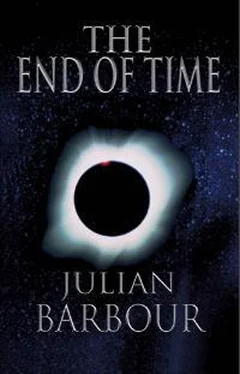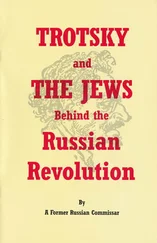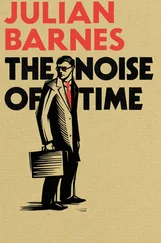For the study of time is not just that – it is the study of everything.
GETTING TO GRIPS WITH ELUSIVE TIME
The hardest thing of all is to find a black cat in a dark room, especially if there is no cat .
Confucius
We must begin by trying to agree what time is. The problems start already, as St Augustine found. Nearly everybody would agree that time is experienced as something linear. It seems to move forward relentlessly, through instants strung out continuously on a line. We ride on an everchanging Now like passengers on a train. Each point on the line is a new instant. But is time moving forward – and if so through what – or are we moving forward through time? It is all very puzzling, and philosophers have got into interminable arguments. I shall not attempt to sort them out, since I do not think it would get us anywhere. The trouble with time is its invisibility. We shall never agree unless we can talk about something we can see and grasp.
I think it is more fruitful to try to agree on what an instant of time is like. I suggest it is like a ‘three-dimensional snapshot’. In any instant, we see objects in definite positions. Snapshots confirm our impression; artists were painting pictures that look like snapshots long before cameras were invented. This does seem to be a natural way to think about the experience of an instant. We also have evidence from the other senses. I feel an itch at the same time as seeing a moving object in a certain position. All the things I see, hear, smell and taste are knit together in a whole. ‘Knitting together’ seems to me the defining property of an instant. It gives it a unity.
The three-dimensional snapshots I have in mind could be constructed if many different people took ordinary two-dimensional snapshots of a scene at the same instant. Comparison of the information in them makes it possible to build up a three-dimensional picture of the world in that instant. That is what I mean by a Now. It is very remarkable that such completely different two-dimensional pictures can be reconciled in a three-dimensional representation. The possibility of this ordering is what leads us to say that things exist in three-dimensional space. It leads to an even deeper ‘knitting together’ over and above the directly experienced sense of being aware of many different things at once (it is this that enables us to know instantly that we are seeing, say, six distinct objects without counting them individually). I regard space as a ‘glue’, or a set of rules, that binds things together. It is a plurality within a deep unity, and it makes a Now.
You may object that no experience is instantaneous, just as snapshots require finite exposures. True, but we can still liken instants to snapshots. It is the best idealization I know. It allows us to begin to get our hands on time, which is otherwise for ever slipping through our fingers. As instants, rather than an invisible river, time becomes concrete. We can pore over photographs, looking for evidence in them like military intelligence analysts studying satellite pictures. We can imagine ‘photographing’ our successive experiences, obtaining innumerable snapshots. Using them, we can identify the most important properties of experienced time.
THE PROPERTIES OF EXPERIENCED TIME
Suppose that the snapshots are taken when we are witnessing lots of things happening, say people streaming past us in a street, and that the snapshots (either two-dimensional, as directly experienced, or ‘three-dimensional’, as explained above), once taken, are jumbled up in a heap. A different person, given the heap, could relatively easily, by examining the details in the snapshots, arrange them in the order they were experienced. A movie can be reassembled from its individual frames. My notion of time depends crucially on the details that the ‘snapshots’ carry. It requires the richly structured world we do experience.
This imaginary exercise brings out the most important property of experienced time: its instants can all be laid out in a row. They come in a linear sequence. This is a very strong impression. It is created not by invisible time, but by concrete things.
It is harder to pin down other properties. I have already mentioned the difficulty of saying precisely what the powerful impression of moving forward in time consists of. We also have the intuition of length of time, or duration. Indeed, seconds, minutes, hours dominate our age, though you may not know how these precise notions have arisen. That is an important issue. Finally, there is the remarkably strong sense that time has a direction. A line traced in the sand does not by itself define a direction. If time is a line, it is a special one.
The evidence for time’s direction is in the ‘snapshots’. Many contain memories of other snapshots. We can do a test on time. We can stop at one of our experienced instants laid out in a line, and see that it contains a memory. We locate the remembered instant somewhere in the line. That defines a direction – from it to the memory of it. We can do this with other pairs of instants. They always define the same direction. Many other phenomena define a direction. Coffee cools down unless we put it in the microwave; it never heats up. Cups shatter when we drop them; shards never reassemble themselves and leap back up onto the table as a whole cup. All these phenomena, like memories, define a direction in time, and they all point the same way. Time has an arrow.
Thus, experienced time is linear, it can be measured and it has an arrow. These are not properties of an invisible river: they belong to concrete instants. Everything we know about time is garnered from them. Time is inferred from things.
NEWTON’S CONCEPTS
In 1687, Newton created precise notions of space, time and motion. Despite major revisions, much of his scheme remains intact. It is still close to the way many people, including scientists, think about time.
Newton’s time is absolute. It flows with perfect uniformity for ever and nothing in the world affects its flow. Space, too, is absolute. Newton conceived of space as a limitless container. It stretches from infinity to infinity like a translucent block of glass, through which, nevertheless, objects can move unhindered. Space is a huge arena; time is a clock in the grandstand. Both are more fundamental than things. Newton could imagine an empty world but not a world without space and time. Many philosophers have agreed with him. So does the proverbial man in the pub, convinced that space goes on for ever and that ‘there must have been time before the Big Bang’.
At any instant, all the things in the Newtonian world are at definite positions. His absolute space performs two distinct roles. As in the discussion above, it binds, or holds, things together, in one instant. But it also places them in a container. Imagine taking two-dimensional snapshots of a table in a room. Paint out the background room, and you could still reconstruct the form of the three-dimensional table, but you would not know where to place it. Newton insisted that the things in the world in any instant have a definite place, and he posited absolute space as a kind of room to provide that place. His fixed container persists through time. We could take real snapshots of the things in the world (Figure 1). Ideally, these snapshots should be three-dimensional, like space, and show all things relative to each other and their positions in absolute space, just as snapshots of a soccer match show the players, ball and referee on the pitch with its markings. The grandstand clock records the time.
According to Newton, all bodies move through absolute space in accordance with definite laws of motion which govern the speed and direction of the bodies in that space as measured by absolute time. The laws are such that if the motions of the bodies are known at some instant, the laws determine all the future movements. All the world’s history can be determined from two snapshots taken in quick succession. (If you know where something is at two closely spaced instants, you can tell its speed and direction. Two such snapshots thus encode the future.)
Читать дальше












